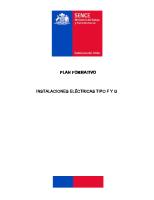Sense and Sensibility
LESSON PLAN GRADE: the XIth D (students aged 16 – 18) LEVEL: Upper Intermediate TEXTBOOK: Upstream Upper Intermediate TI
Views 77 Downloads 1 File size 120KB
Recommend stories
- Author / Uploaded
- Ian Giorgiana
Citation preview
LESSON PLAN GRADE: the XIth D (students aged 16 – 18) LEVEL: Upper Intermediate TEXTBOOK: Upstream Upper Intermediate TITLE OF THE LESSON: Moods and Feelings TYPE OF THE LESSON: Combined lesson SUBJECT: Sense and sensibility, by Jane Austen TIME: 50 minutes AIMS OF THE LESSON: to say words related to moods and feelings; to skim the text for extracting specific information; to predict the content of the text using title, words and pictures; to listen the text and answer comprehension exercises; to explain words and phrases using context, pictures and dictionary. TECHNIQUES USED: Receptive skills: reading Productive skills: speaking and writing TEACHING AIDS: textbooks, notebooks, blackboard, ORGANISATION: individual work, pair work, group work STAGES OF THE LESSON STAGES LESSON
OF
THE TIMING
Warm-up 10’
Presentation
Performance and feed back
10
20’
TEACHER’S ACTIVITY
STUDENTS’ ACTIVITY
Greets the students, asks who is absent and why; checks the homework.
Answer the teacher’s questions and show their homework to be corrected.
Asks the Ss to complete a crossword puzzle and to review words connected with moods and feelings.
Review words connected with moods and feelings completing a cross word puzzle. The work is checked in front of the class – they found the name of Jane Austen. Listen to the T’s explanations and think of possible themes of the lesson.
Writes the title of the novel on the board and explains the difference between “sense” and “sensibility”. Asks the Ss about their expectations regarding the book, and its characters. Speaks about Jane Austen’s life and her works. Underlines the features of her work and her role in literature. Asks the Ss to read, from the textbook, the data about Jane Austen and to think of what they have read before and what they have read from the book, and to write down three questions about the author.
Read the extract and write down their questions. The questions will be written on the board. Will write down the questions and read them aloud. Some Ss helped by the T will answer to their questions.
Will allow Ss to read the short text about the author, help them with vocabulary, and elicit what questions Ss have. Asks the Ss to read the text in silence and to think of some characteristics of the early 19th century society.
Read the text and think of what the book is about and how the characters evolve in the book.
For exercise 2 the T will explain the task and ask 2-3 Ss to read out the sentences A-I, to look at the example and explain why D is correct.
Read the sentences and answer the Ts question. (It contains the reference words “After all, the house” which introduces the why “no one could dispute her right to come” in the previous sentence.) Complete the task.
Checks Ss answers. Setting homework
10’
For exercise 3a the T explains the task and asks the Ss to find collocations in the extract; for 3b explains the task and checks Ss answers; and for 3c allows Ss several minutes to read the article again and to explain the highlighted words. For exercise 4a and 4b the T allows Ss to find and underline all the adjectives and find words that describe how Elinor, Marianne and their mother feel. For exercise 5 the T explains the task, does the first item together with the Ss.
Pay attention to the teacher’s explanations; Read the tasks and write down in their notebooks the extra information that the teacher gives.









